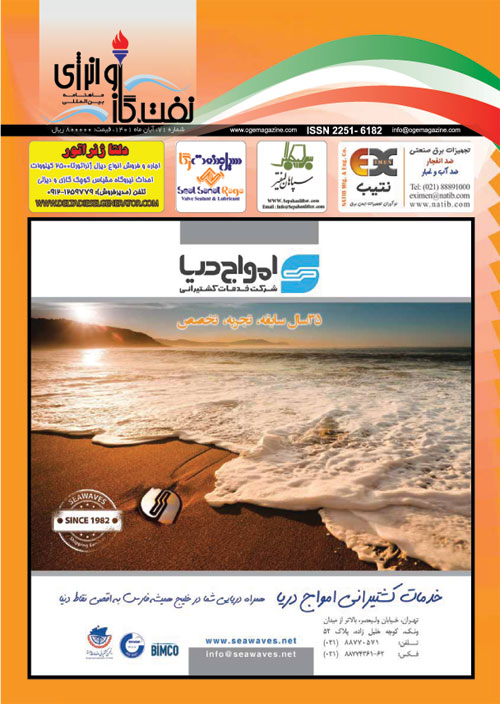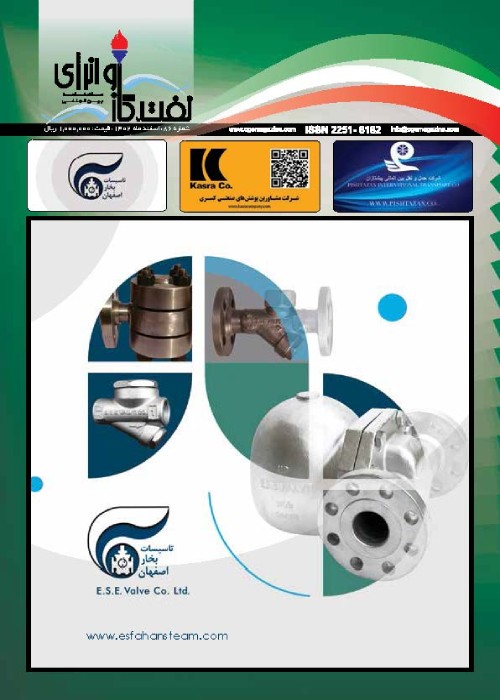فهرست مطالب

ماهنامه نفت، گاز و انرژی
شماره 71 (آبان 1401)
- بهای روی جلد: 800,000ريال
- تاریخ انتشار: 1401/08/22
- تعداد عناوین: 4
-
Page 15
Research shows that the use of this type of exterior has a significant impact on the amount of thermal load, rotation and energy consumption of the building. In this research, a 5-story real-estate building that is administrated in the Tabriz city (as a cold climate) was carefully designed using Design Builder software Design Builder and then calculated using thermal energy calculations using energy plus solver. The results obtained can be found among the different modes studied for double skin façade in Tabriz. Three-glazed glass with the specifications mentioned is the most suitable type of glass for this bulding.
Keywords: Energy, glass types, double skin façade, thermal load -
Page 28
In this paper, the deposition of asphaltene and its relationship with water based EOR methods (including injection of low salinity water, injection of nanofluid and injection of emulsion solvents) from oil reservoirs have been investigated. Studies show that in the injection of low-salt water, all salt water intensifies the deposition of asphaltene. The same trend is observed for surface tension between crude oil and salt water (IFT). Increasing the volume of all brine in the mixture leads to increasing and decreasing asphaltene precipitation in low salinity and medium salinity, respectively. NiO, Fe3O4 and SiO2 nanoparticles are used to adsorb asphaltene and prevent its deposition. Different solvents can be used to remove asphaltene deposits. Among the emulsion solvents that are used as an alternative method to remove asphaltene deposit in porous media, emulsion (oil / water) with 70/30 ratio is the optimal solvent since removes all precipitated asphaltene.
Keywords: Asphaltene deposition, Water based EOR methods, Nanoparticle injection, Low salinity water injection, Emulsion


